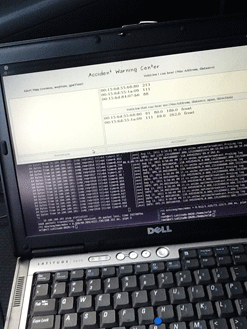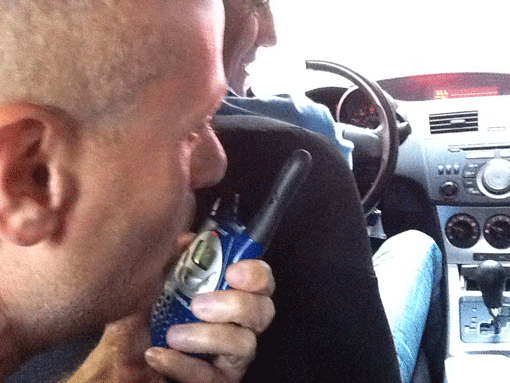Car have so much to say. We only need to listen to them.
Their stories recount adventures, explorations, streets, trips and
dangers. They let us guide them and they accompany us, silent witnesses of
our journeys, delays, discoveries, fights as to what directions to take
and fear for the road loss. When we park them on the street or hide them
in the garage, it is easy to imagine that even them, our cars, light up
their headlights throwing light at each other, telling their own life,
maybe deprecating the way we drive, scared of yet another avoided danger.
And it probably is while imagining such a dialog that Marco Roccetti,
Professor of Internet Architecture at the University of Bologna, invented
a language that allows vehicles to communicate among themselves while in
the traffic and exchanging in real time precious information.
Caution, there is an accident 10 kilometres from here; stop here
because you're going towards a long wait line; there was a collision, slow
down. All these important news would allow us to avoid incidents and
reduce the risk of injuries to others. The project, implemented by
Professor Roccetti in the Computer Science Department with the
collaboration of colleagues Alessandro Amoroso and Gustavo Marfia, was
tested last summer on the most famous streets of the world for its
circulation, its congested traffic and the number of vehicles in transit
each day: the highways of Los Angeles. In the most inhabited county in the
United States, people of every possible races go about each day driving
their own car. From the many city areas, it is an unceasing flow of
animated roads and dreams going towards the centre and, during what is
called rush hour, 

40% the probability of chain accidents on a highway, was followed with
attention by the international media. Its efficiency is, in fact, able to
signal accidents which happened more than 20 kilometres away in
fractions of seconds. This has also caught the attention of the automobile
industry and insurance companies, sectors in which the system could be
particularly useful. They are so many today working on vehicle-to-vehicle
(V2V) systems, to follow the data and information exchange between
automobiles and studying from pollution to accidents. The GSM, GPRS, UMTS
and other connections have however been little trustworthy and with a
broadcasting capacity limited or slowed down by eventual obstacles which
could come along the route. Roccetti and his colleagues have instead
optimized their system to such a point that their information is updated
within seconds and without any interference. That is maybe why the City of
Angels, where the most astonishing things happen each day, observed with
great interest the tests done by the Bologna professors. The most
influential scientific magazines in the US have published the results of
the experiment and the University of California has conffered them the
title of visiting professors. And if it is true that every revolution
begins on the street, we hope this one stays on ours for a long time so we
can avoid preventable risks and save our life.